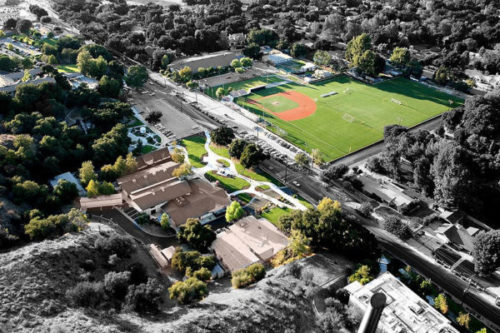Yesterday, Dee Parsons from Wartburg Watch tweeted a question about the The Master’s University’s claim that the school was ranked as a #1 “right choice” school by the Wall Street Journal. Here’s what The Master’s University said about their rating by the WSJ in 2016.
In the September 29 edition of The Wall Street Journal, The Master’s University was ranked #1 for being the “right choice” of institutions rated among the nation’s 4,000 colleges and universities.
Congratulations to President John MacArthur and the faculty and staff of The Master’s University for your exemplary work. And to the students and their families, congratulations on choosing TMU and making the “right choice.”
In 2017, TMU proclaimed:
the Wall Street Journal recently recognized TMU as #1 Right Choice University amongst all U.S. colleges/universities for the 2nd year in a row
In Medium, TMU wrote this:
The Wall Street Journal has ranked TMU number 1 in the country for two years in a row as the top “right choice” university.
Indeed the WSJ did mention TMU in 2016 and 2017 but the ranking was more of a rating by the students. WSJ asked 100,000 students a series of questions about their college including “if you could start over, would you still choose this college?” On that question, TMU students gave their school ratings higher than students at any other school. Lancaster (PA) Bible College ranked second on that question. LBC’s write up about the survey more clearly explains the significance of the rating.
The Wall Street Journal surveyed students and asked them a series of questions to determine each institutions ranking. For the Right Choice category, students were asked, “If you could start over, would you still choose this college?” LBC earned a score of 9.46 out of 10.
The WSJ articles are behind a paywall but the 2017 article on the college rankings described the category as students’ response to being asked “if they would choose their school again.” According to the WSJ,
The Master‘s University, a small Christian liberal-arts school in Santa Clarita, Calif., topped all comers in that category, despite not cracking the top 500 schools in the overall ranking.
In a related article, the WSJ said,
The survey also asked students three questions that weren’t taken into consideration in the rankings, including whether students would choose their school again. Highest marks again went to schools with a religious affiliation, including The Master’s University in Santa Clara, Calif., Lancaster Bible College and Brigham Young, Hawaii.
Obviously, TMU’s students believe they made the right choice, so I don’t mean to take anything away from TMU. However, there is a difference between WSJ ranking a school and students rating a school via a survey. When TMU portrays an average score on a student rating as a merit-based ranking by the WSJ, there is potential for their audience to be misled.
Like this article and want to see more like it? Support this blog at Patreon.com.
[email-subscribers namefield=”NO” desc=”Subscribe to receive notification of new posts.” group=”Public”]
Image: The Master’s University, by Lukasinla [GFDL (http://www.gnu.org/copyleft/fdl.html) or CC BY 3.0 (https://creativecommons.org/licenses/by/3.0)], from Wikimedia Commons

“For the Right Choice category, students were asked, “If you could start
over, would you still choose this college?” LBC earned a score of 9.46
out of 10.”
Sounds like a very brain-washed contingent of students.
I’ve read a lot of education ranking press releases, and while these short blurbs from TMU would be fine as ledes for stories with further detail, by themselves they are missing the specifics to fill out a story and support what exactly this means. I fully expect as a reader to see some other explanation to dig deeper to: links to/quotes from what the WSJ said about these schools, etc. Without that detail, the blurbs do seem a bit misleading as to what the ranking means. Let’s just say that this kind of practice would not fly in my milieu.
Furthermore, it’s interesting that the wording is “right choice” – very authoritative, without any backup as to why other than the authority of WSJ. Don’t question – listen to us, listen to the WSJ, come here and soak up what we say about everything, because we are right. But maybe I’m over-exercising my English major analysis muscles on that one.
https://medium.com/the-masters-university/why-business-at-tmu-aa556ee6e4fd
Hmmm…I think if you are looking for them in a longer piece to be clear as to what this ranking means that this link isn’t exactly what you had in mind!
Given the relatively small size of a lot these schools, I wonder what the error bars were.
Also how was WSJ contacting the students? The university explicitly says that student email is not private.
I share your perspective that convenience samples are not necessarily bad and can be enlightening so long as the paper’s discussion and conclusions transparently consider the sampling method. However, I completely understand the defensiveness of trans* advocacy groups. Academics with an agenda have tried to use research to cast aspersions about gay people in the not-so-distant past. In particular, prior to peer review, Jones and Yarhouse (2011) claimed that sexual orientation change was possible, and Regnerus (2012) claimed that gay parenting harms children. Both studies had methodological concerns with data collection; and both (initially) reached conclusions that that were aligned with the researchers’ religious worldview but were not supported by the data.
This might be on the wrong post, eh?
Yes. Weird. Should have been on the post about Littman’s methodology. I don’t think it was user error…but, then again, I never do.
Perhaps you should repost there if you want replies to your comments.